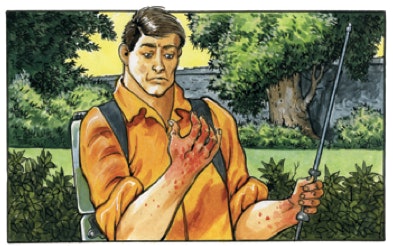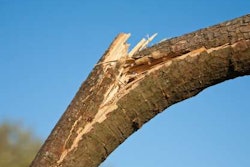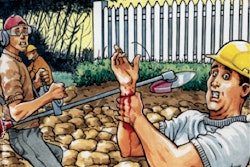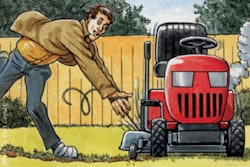
What the expert says: A topical steroid would likely clear up the worker’s rash, and protecting his skin from further contact with the chemical would probably prevent another outbreak, says Dr. Joel Schlessinger, a dermatologist in Omaha, Nebraska.
The chemicals in fertilizers and pesticides can cause two types of health problems: irritations and allergic reactions, Schlessinger says. “The difference between these is that an allergy can occur the minute a chemical comes in contact with the skin, while irritation typically occurs with prolonged exposure to a harsh chemical,” as in this case, he says. “Some people can be both allergic and irritated by chemicals.”
You should always wear gloves, eye protection, long sleeves and pants when handling fertilizers or pesticides.
If you or a co-worker is exposed to a chemical, the material safety data sheets that should be available from your employer are the best place to turn, Schlessinger says, as they detail steps to follow in the event of eye or skin contact, inhalation or ingestion. The U.S. Occupational Safety & Health Administration requires your employer to provide you with a manufacturer label and material safety data sheet for every chemical you encounter on the job.
If your employer doesn’t provide these data sheets, you can find international chemical safety cards for more than 1,300 substances at www.cdc.gov/niosh/ipcs/icstart.html. The cards are available in 14 languages, and, according to OSHA, they are similar to MSDSs in terms of the information they provide.
First aid procedures for chemical exposure vary depending on the chemical, which is why MSDSs are so important, but if one isn’t available, your local poison control center should be able to help. Keep its phone number handy. If the substance is on skin or in eyes, flushing the area liberally with water is often the most important thing to do, Schlessinger says.
Schlessinger says you should read warning labels before using pesticides and fertilizers and follow manufacturers’ precautions. Encourage your employer to obtain material safety data sheets and put someone in charge of them. “Additionally, prepare for the eventuality that someone will get a reaction or allergy,” Schlessinger says, and go over a plan of action.









